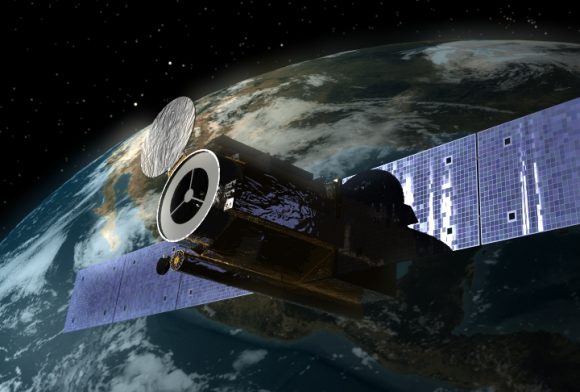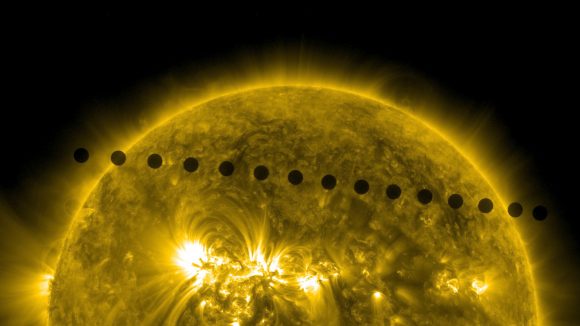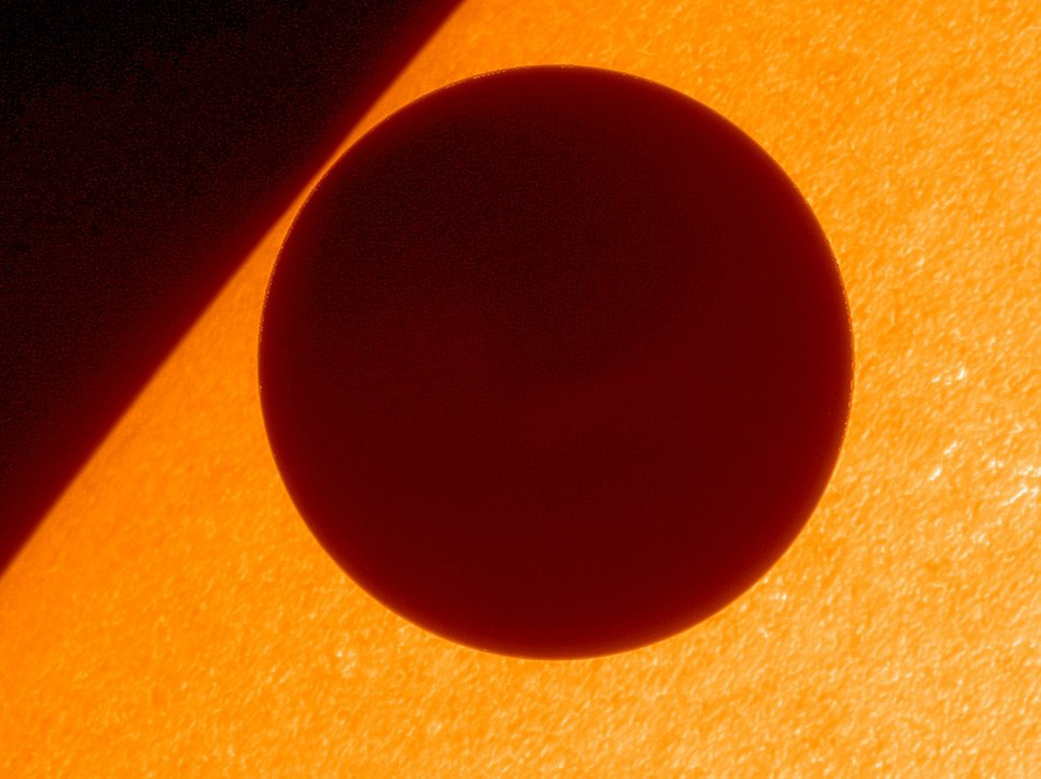Venus and Mercury have been observed transiting the Sun many times over the past few centuries. When these planets are seen passing between the Sun and the Earth, opportunities exist for some great viewing, not to mention serious research. And whereas Mercury makes transits with greater frequency (three times since 2000), a transit of Venus is something of a rare treat.
In June of 2012, Venus made its most recent transit – an event which will not happen again until 2117. Luckily, during this latest event, scientists made some very interesting observations which revealed X-ray and ultraviolet emissions coming from the dark side of Venus. This finding could tell us much about Venus’ magnetic environment, and also help in the study of exoplanets as well.
For the sake of their study (titled “X-raying the Dark Side of Venus“) the team of scientists – led by Masoud Afshari of the University of Palermo and the National Institute of Astrophysics (INAF) – examined data obtained by the x-ray telescope aboard the Hinode (Solar-B) mission, which had been used to observe the Sun and Venus during the 2012 transit.

In a previous study, scientists from the University of Palermo used this data to get truly accurate estimates of Venus’ diameter in the X-ray band. What they observed was that in the visible, UV, and soft X-ray bands, Venus’ optical radius (taking into account its atmosphere) was 80 km larger than its solid body radius. But when observing it in the extreme ultraviolet (EUV) and soft X-ray band, the radius increased by another 70 km.
To determine the cause of this, Afshari and his team combined updated information from Hinode’s x-ray telescope with data obtained by the Atmospheric Imaging Assembly on the Solar Dynamics Observatory (SDO). From this, they concluded that the EUV and X-ray emissions were not the result of a fault within the telescope, and were in fact coming from the dark side of Venus itself.
They also compared the data to observations made by the Chandra X-ray Observatory of Venus in 2001 and again in 2006-7m which showed similar emissions coming from the sunlit side of Venus. In all cases, it seemed clear that Venus had unexplained source of non-visible light coming from its atmosphere, a phenomena which could not be chalked up to scattering caused by the instruments themselves.
Comparing all these observations, the team came up with an interesting conclusion. As they state in their study:
“The effect we are observing could be due to scattering or re-emission occurring in the shadow or wake of Venus. One possibility is due to the very long magnetotail of Venus, ablated by the solar wind and known to reach Earth’s orbit… The emission we observe would be the reemitted radiation integrated along the magnetotail.”

In other words, they postulate that the radiation observed emanating from Venus could be due to solar radiation interacting with Venus’ magnetic field and being scattered along its tail. This would explain why from various studies, the radiation appeared to be coming from Venus’ itself, thus extending and adding optical thickness to its atmosphere.
If true, this finding would not only help us to learn more about Venus’ magnetic environment and assist our exploration of the planet, it would also improve our understanding of exoplanets. For example, many Jupiter-sized planets have been observed orbiting close to their suns (i.e. “Hot Jupiters“). By studying their tails, astronomers may come to learn much about these planets’ magnetic fields (and whether or not they have one).
Afshari and his colleagues hope to conduct future studies to learn more about this phenomenon. And as more exoplanet-hunting missions (like TESS and the James Webb Telescope) get underway, these newfound observations of Venus will likely be put to good use – determining the magnetic environment of distant planets.
Further Reading: The Astronomical Journal

